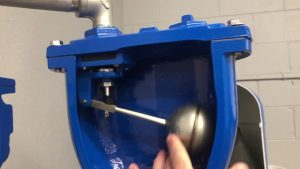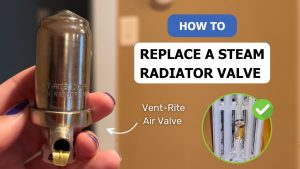The ball is the opening and closing part of the ball valve. The ball rotates around the center line of the valve body to open and close the ball valve. The ball valve can cut off, adjust, distribute and change the flow direction of the medium in the pipeline. Ball valve has many advantages and is a new type of valve that has been widely used in recent years. Ball valves with different functions often have different spheres.
Ⅰ. Casting method of ball valve
Casting method is a traditional processing method. It requires a complete set of smelting, pouring and other equipment, as well as larger workshops and more workers, large investment, many processes, complex production processes, and environmental pollution. The technical level of the workers in the process will directly affect the quality of the product. The problem of valve ball capillary leakage cannot be completely solved, and the blank machining allowance is large and the waste is large. It is often easy to be scrapped due to found casting defects during the processing process, and resulting in increased product cost and unguaranteed quality.
Ⅱ. Forging method of ball valve
The forging method is another method used by many valve companies in China. It has two processing methods: one is to use round steel to cut, heat and forge into a spherical solid blank, and then perform mechanical processing.
The second is to mold the stainless steel plate into a circular shape on a large press to obtain a hollow hemispherical blank, and then to weld it into a valve sphere blank for machining. This method has a high material utilization rate, but requires a high-power press, heating furnace and argon arc welding equipment.
1. Free forging
Free forging refers to a processing method in which the metal blank is heated and placed between the anvils (upper and lower) of the forging equipment, and impact force or pressure is applied to make the blank directly plastically deform to obtain the forgings to be produced.
Classification: free forging by hand, free forging on hammer, free forging by hydraulic press.
Advantages: strong applicability, great flexibility, short cycle, the only method for extra large forgings.
Disadvantages: low precision, large machining allowance, low efficiency and high labor intensity.
2. Die forging
Die forging is to heat the billet and put it in the forging die fixed on the die forging equipment to forge the final shape.
Die forging equipment: In industrial production, hammer die forging is mostly used. Steam/air hammer, the most common die forging on presses with a tonnage of 5KN~300KN (0.5~30t) is a hot die forging press.
3. Forging ratio
Forging ratio: Refers to the ratio of the cross-sectional area of the billet (metal) before and after forging.
4. Forging temperature
- a) Initial forging temperature: The initial forging temperature can be considered as the maximum temperature at which the steel or alloy is allowed to be heated in the furnace.
- b) Final forging temperature: For ball valve fittings, the billet should still have strong plasticity before the end of forging, and the recrystallized structure will be obtained after forging.
Ⅲ. Spinning method of ball valve
Metal spinning method is an advanced processing method with few chips and no chips. It belongs to a new branch of pressure processing. It combines the process characteristics of forging, extrusion and rolling. This method has high material utilization (up to 80%-90%), less processing time (1-5 minutes for forming), and the material strength can be doubled after spinning.
Due to the small area of contact between the rotary wheel and the workpiece during spinning, the metal material is in a state of two- or three-way compressive stress and is easy to deform. Therefore, a higher unit contact stress (up to 25- 35Mpa) under a small power, and the equipment is light in weight, and the total power required is small (less than 1/5-1/4 of the press). This method has been recognized by the foreign valve industry as an energy-saving valve ball processing technology scheme, and is also suitable for processing other hollow rotating parts.
Spinning technology has been widely used and developed at a high speed in foreign countries. The technology and equipment are very mature and stable, and the automatic control of mechanical, electrical and hydraulic integration is realized. At present, spinning technology has also been greatly developed in China, and has entered the stage of promotion and practicality.












